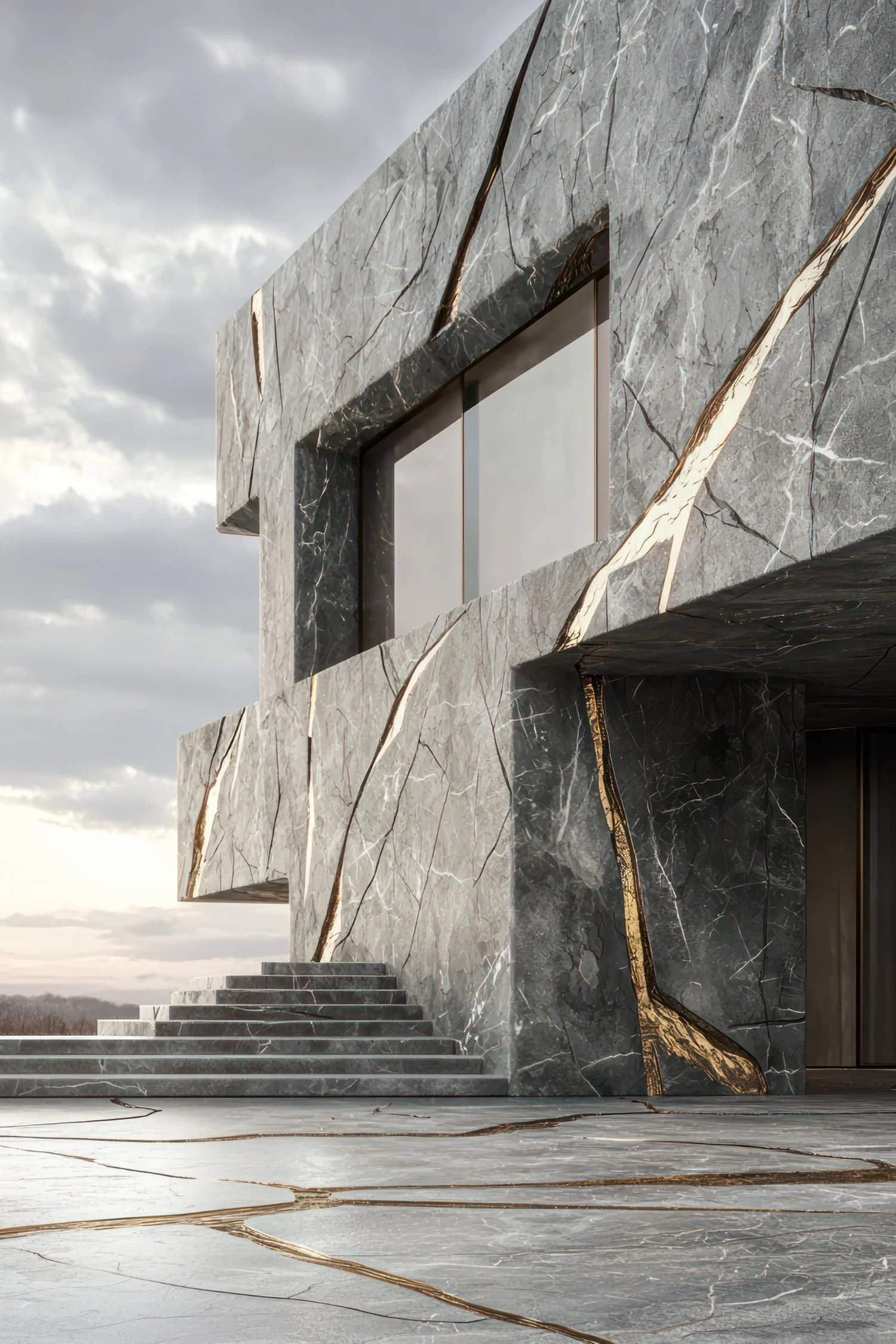We live in an age obsessed with flawlessness. Smooth surfaces. Clean lines. Hidden wiring. Hidden lives. When something breaks, we replace it. When a wall cracks, we panic. When a house shows its age, we pretend it’s a tragedy.
But maybe we’re seeing it all wrong.
The Japanese principle of Kintsugi offers a quiet rebellion against this modern logic. Instead of hiding breakage, it honours it. A broken bowl isn’t discarded, it’s repaired with gold.
The crack becomes the highlight. The history becomes the beauty.
Cracked, not broken. Like homes, like people. Kintsugi reminds us that visible scars can be marks of strength, not shame.
And what if we applied that thinking not just to ceramics, but to our built environment?
What if cracked walls, sagging beams, and awkward extensions weren’t signs of failure, but resilience? Markers of life lived, challenges overcome, structures that refused to give in?
Old houses in Luxembourg have certainly had their share of cracks. War, poverty, neglect, unspeakable tile choices from the 1970s. But still they stand.
And when we renovate them, we often obsess about restoring them to a better past, or worse, dragging them into a sterile present. We straighten, rewire, reframe. But rarely do we let the scars show.
Why?
Do we really believe that imperfection is a threat to value?
Or are we just afraid to admit that beauty can come with a crack, and meaning with a scar?
Hormesis and Houses
Science has a term for this too: hormesis. It’s the paradoxical idea that a reasonable amount of stress makes you stronger. Muscles grow when torn. Immunity builds through exposure. Even wine, in moderate amounts, is better than abstinence (according to some optimistic studies and several winemakers).
What if houses, like humans, respond to stress not just by breaking, but by evolving?
What if that dodgy back room you had to rebuild from the ground up is now the warmest, most characterful part of the house?
What if the awkward hallway you hated at first now frames your favourite view of the garden?
Renovation is rarely smooth. Anyone who’s lived through it knows this. Things go wrong. Budgets burst. You find a dead mouse and asbestos in the attic insulation and a 1982 copy of “Revue” behind the kitchen plasterboard. But over time, something shifts. You begin to see not just flaws, but stories. Not just repairs, but transformations.
What if buildings wore their damage proudly? Kintsugi architecture challenges our obsession with flawless surfaces.
The Gold Is in the Crack
Kintsugi teaches us that repair doesn’t have to be invisible. In fact, the most beautiful repairs are the ones that shine. In homes, that might mean leaving a patch of old wallpaper exposed. Keeping the doorframe that’s been worn by generations of shoulders and elbows. Leaving a ceiling beam just a little uneven, because it tells the truth of how the house stands. Or leaving old traditional cement tiles with little cracks, but still working, still beautiful.
This isn’t romantic nostalgia. It’s a design philosophy, one that challenges the cult of the new, the smooth, the soulless.
It says: value comes from survival. From story. From strength earned, not bought.
And it’s not just aesthetic. Embracing imperfection - thoughtfully, not sloppily - is also a form of rebellion against the disposable mindset that fuels both ecological damage and cultural amnesia.
A home that wears its history with pride doesn’t just shelter you. It teaches you. About patience. About context. About history. About Design.
Final Thought: Renovate Like a Philosopher
So the next time your house cracks: pause before you panic. Look again. Maybe it’s not damage. Maybe it’s gold.
And maybe, like you, the house will simply become stronger in the places where it once broke.
written by Helen M. Krauss


